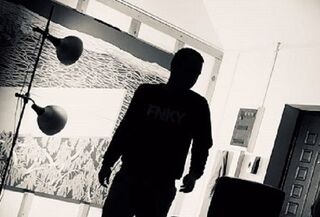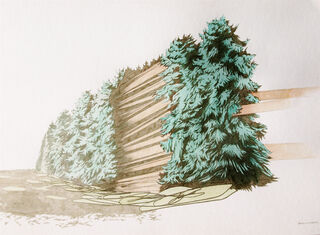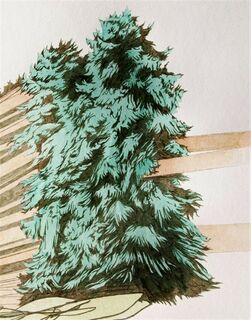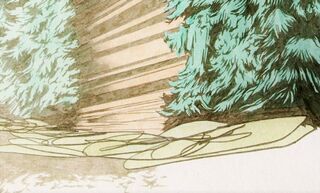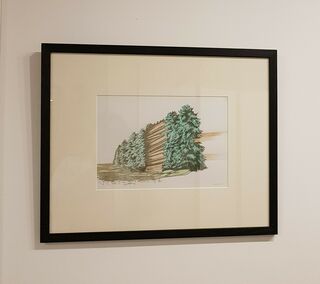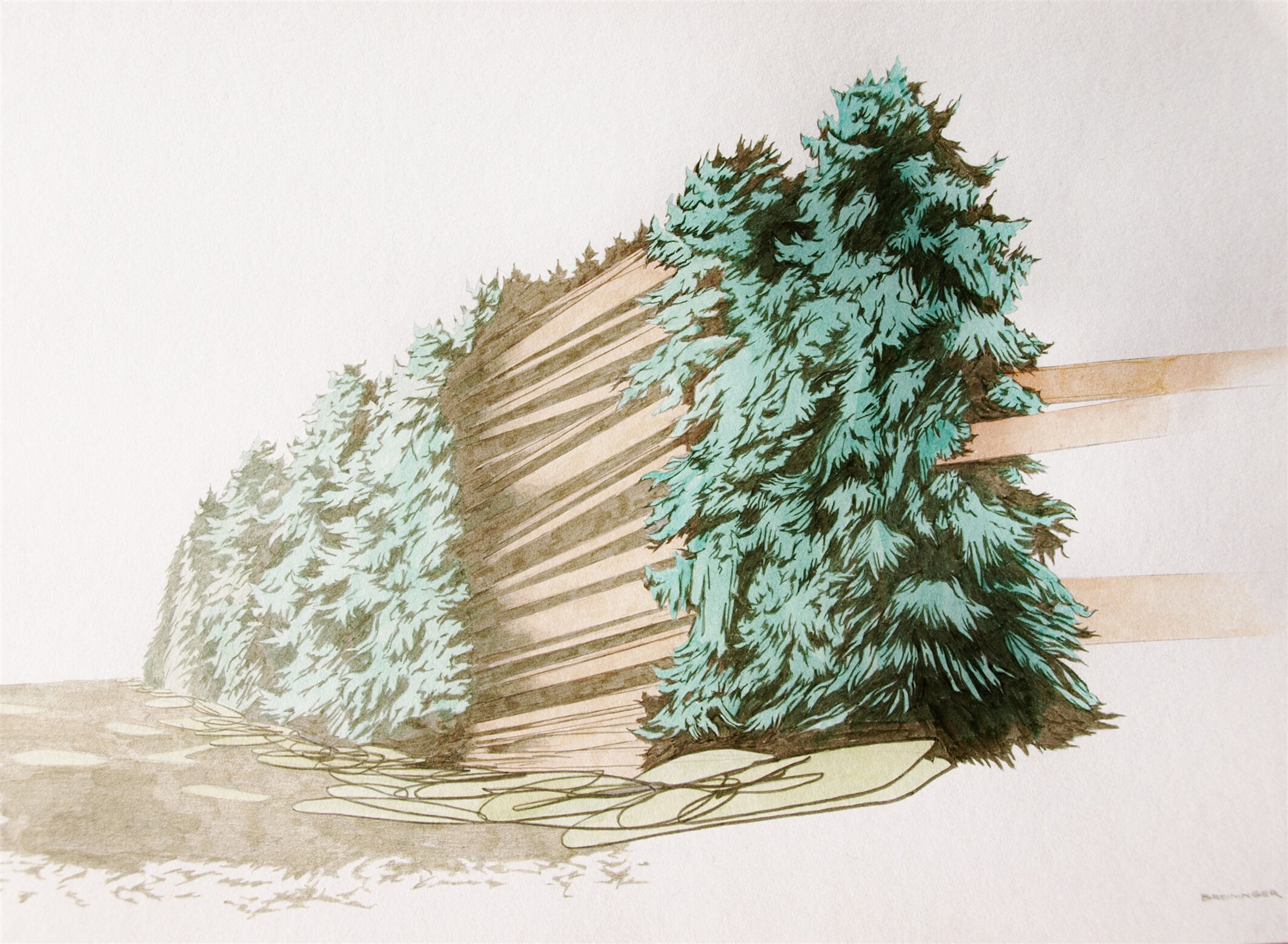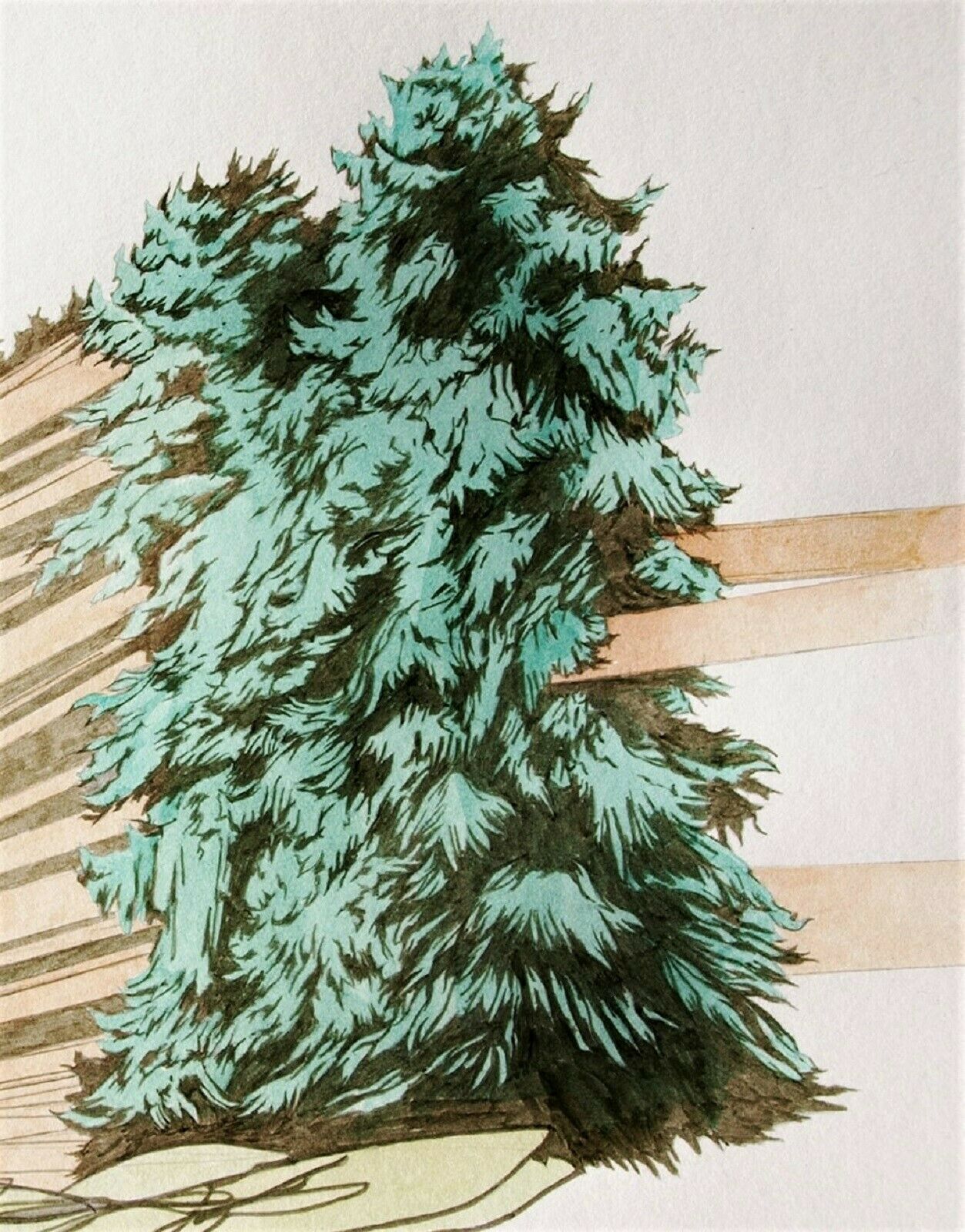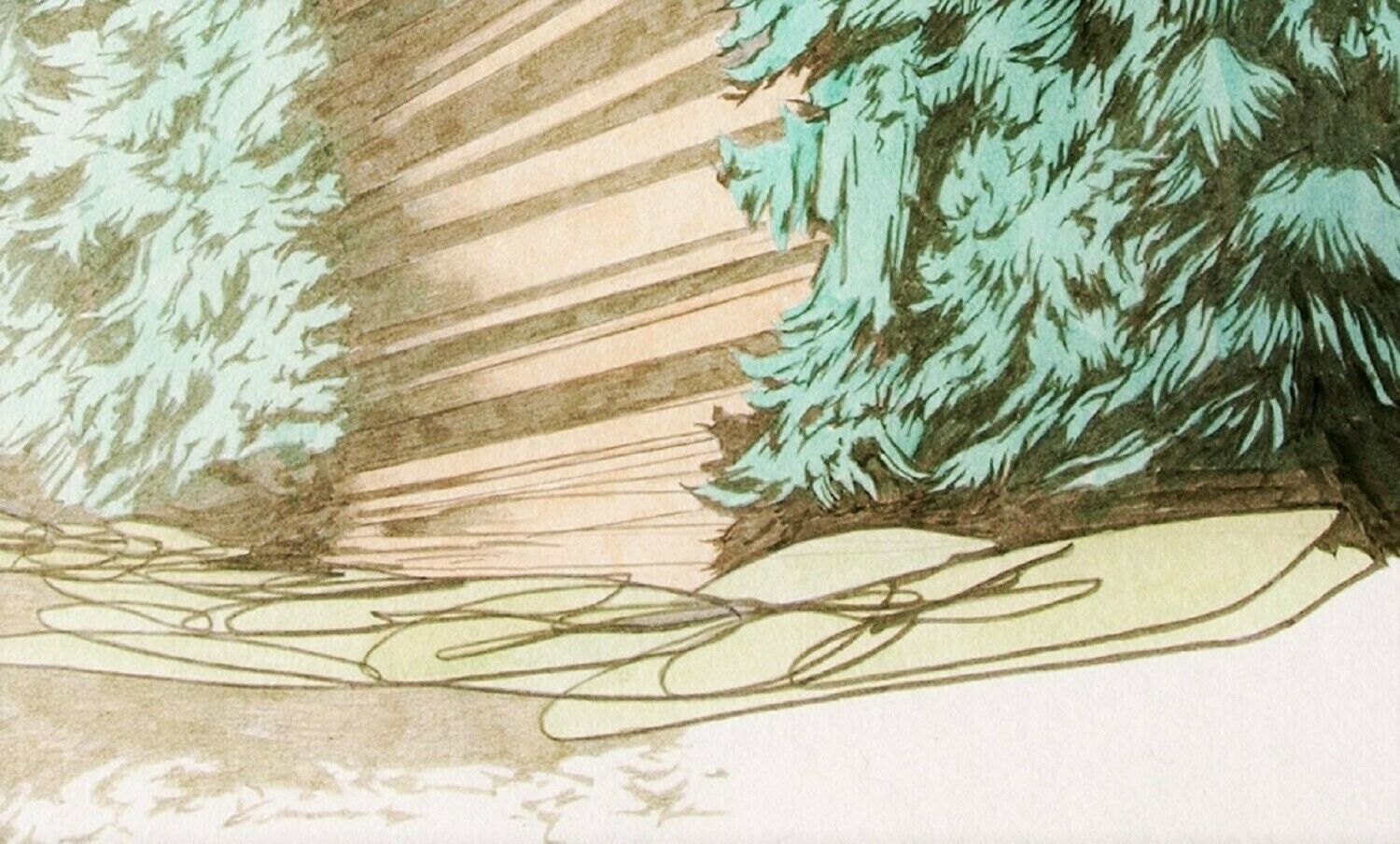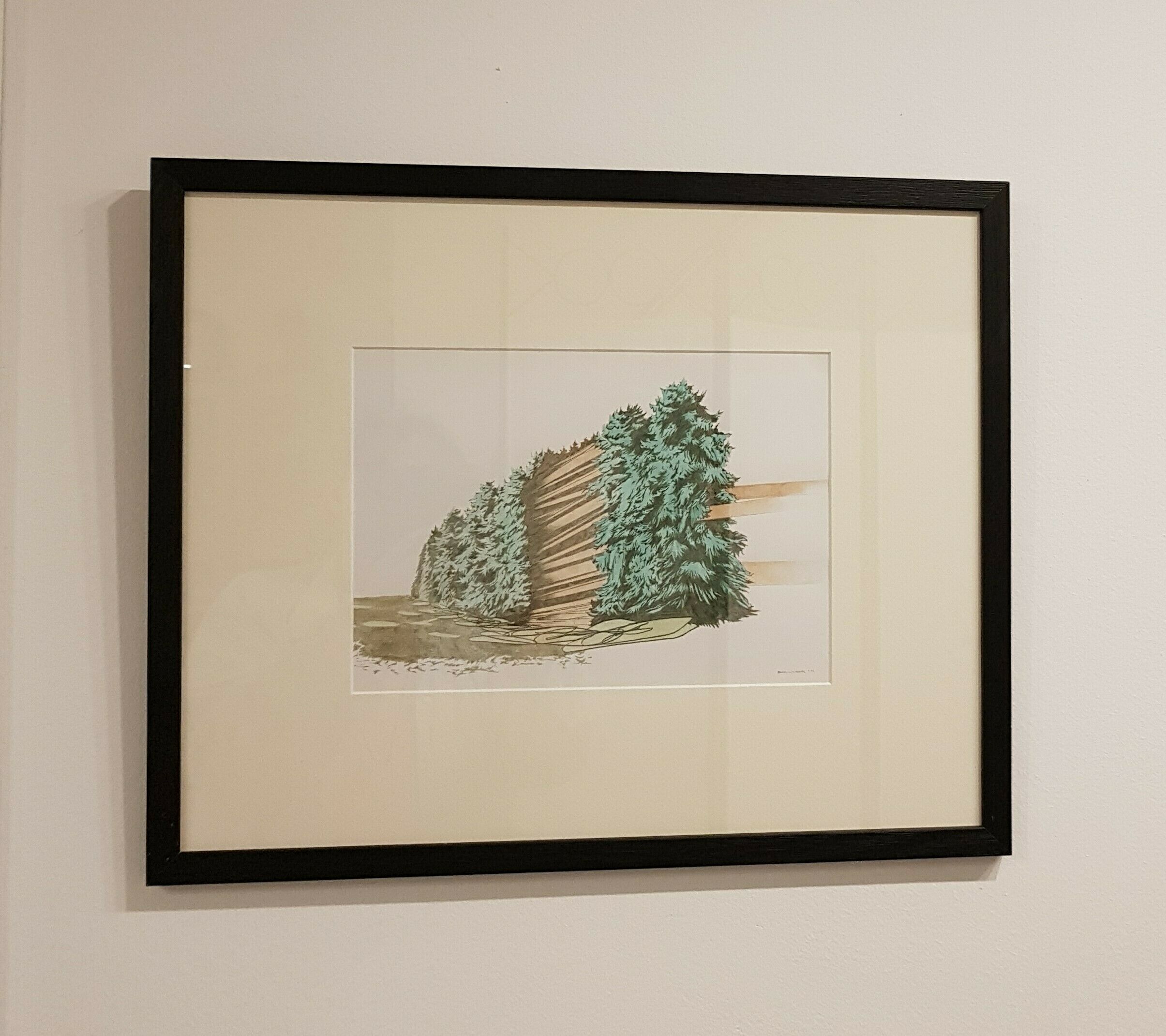Picture "Trees" (2015)


Picture "Trees" (2015)
Quick info
Watercolour | Paper | framed | Format 42 x 52 cm (H/W) | picture hang up | signed certificate of authenticity
Detailed description
Picture "Trees" (2015)
Natural spaces marked by use are the subject of my constant observations. The interventions resulting from the use and their traces in the natural spaces, are understood as self-evident components of nature. The boundary between the intervention and the natural state is dissolved. By visualizing the time-related influences of certain processes, the view is drawn to the fact that capacities have a limited endurance and reflect the capacity of nature to suffer. Furthermore, the position of man in this utilization process is dealt with. The influence he exerts, as well as the consequences he bears, seemingly share his position, but in reality become the dichotomy of his existence. The role of man in the use of nature will be questioned.
